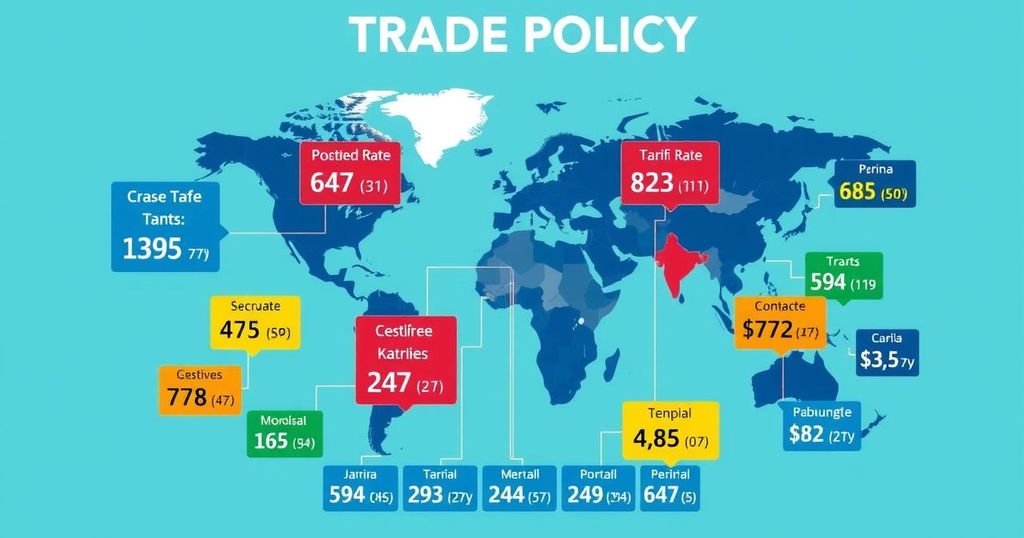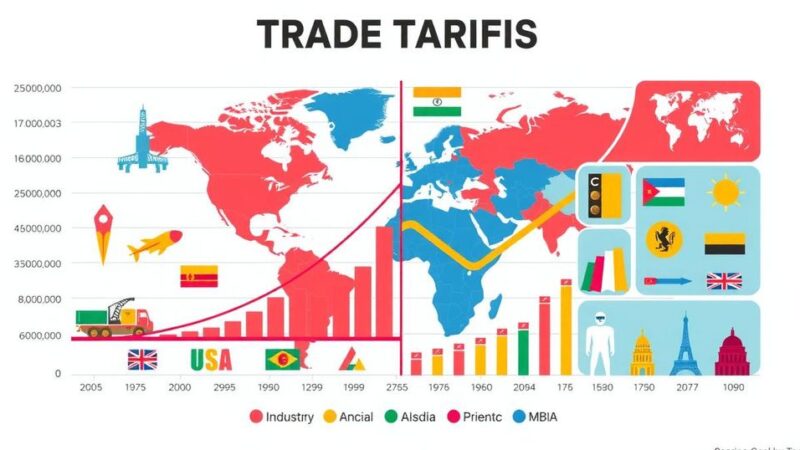President Donald Trump announced a 20% tariff on Jordan, referring to it as a “Liberation Day” tariff. This move is part of his broader trade restructuring initiative, introducing discounted tariffs based on partners’ barriers on US goods. The announcement includes significant tariffs on other countries, marking a noteworthy shift in US trade policy.
On Wednesday, President Donald Trump declared a 20 percent tariff on Jordan, which he dubbed as “Liberation Day” tariffs. This initiative is part of a wider effort to reform US trade policy, as Trump emphasized that these tariffs signify a long-awaited transformation in trade practices.
During the announcement, titled “Make America Wealthy Again,” Trump introduced “discounted reciprocal tariffs” aimed at ensuring fair trade by considering the protective barriers imposed by trade partners on American goods. He noted that this is the most comprehensive tariff announcement of his presidency, designed to encourage equitable trade agreements.
Tariff rates will be assessed at a reduced rate, reflecting the combined impact of existing tariffs and non-monetary trade barriers of each country. Trump asserted that these new tariffs would be approximately half of the existing tariffs imposed on US goods, proclaiming his method as fair.
In his presentation, Trump showcased a chart with proposed tariffs for several countries: Chinese goods would incur a 34 percent tax, EU products a 20 percent tax, Vietnamese goods a 46 percent tax, Japanese imports a 24 percent tax, and Indian goods a 26 percent tax. Some of these proposed rates surpass the initial 20 percent tariff he suggested during his campaign.
Additionally, Trump established a 10 percent baseline tariff for all countries, which influenced the tariff figures presented. He also referenced the potential imposition of a 25 percent tariff on most imports from Canada and Mexico, a decision postponed for a month but likely to be enacted shortly. Furthermore, a 25 percent tariff on all imported cars will take effect at midnight, contributing to the administration’s assertive trade strategy.
In summary, President Trump’s recent tariff declaration marks a significant shift in US trade policy, with a 20 percent tariff placed on Jordan as part of a broader initiative. The proposed tariffs aim to foster fair trade practices, reflecting a reduction based on existing barriers from trading partners. These measures also encompass substantial tariffs on various countries, reaffirming a decisive turn in the US’s economic approach.
Original Source: en.royanews.tv






